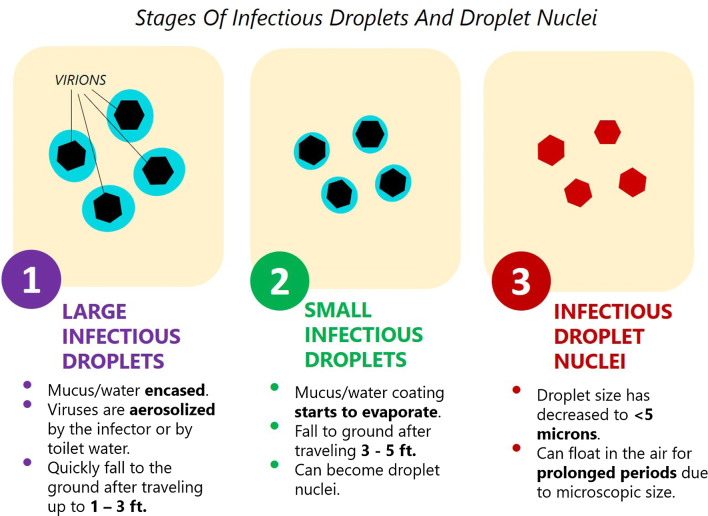Figure 1.
Droplets vs airborne particles (also called droplet nuclei). 1. Large infectious droplets. These droplets are generally > 60 µm in diameter.21 Toilet water is noted here as severe acute respiratory syndrome coronavirus was shown to aerosolize in toilet water.20 2. Small infectious droplets. These droplets are generally 10-60 µm in diameter.21 3. Infectious droplet nuclei, also called airborne particles, are generally < 10 µm in diameter.24 Coughing and sneezing tend to produce a spectrum of droplets, that vary in mean droplet size and number. For example, sneezing produces 4,000-4,600 droplets whereas coughing produces a few hundred droplets.21 Room humidity, temperature, and air changes per hour contribute to determining droplet size.24 Viral load and initial mean and distribution size of droplets are determined by the patient. Used with permission of the British Columbia (BC) Provincial Health Services Authority (BC Centre for Disease Control).23

